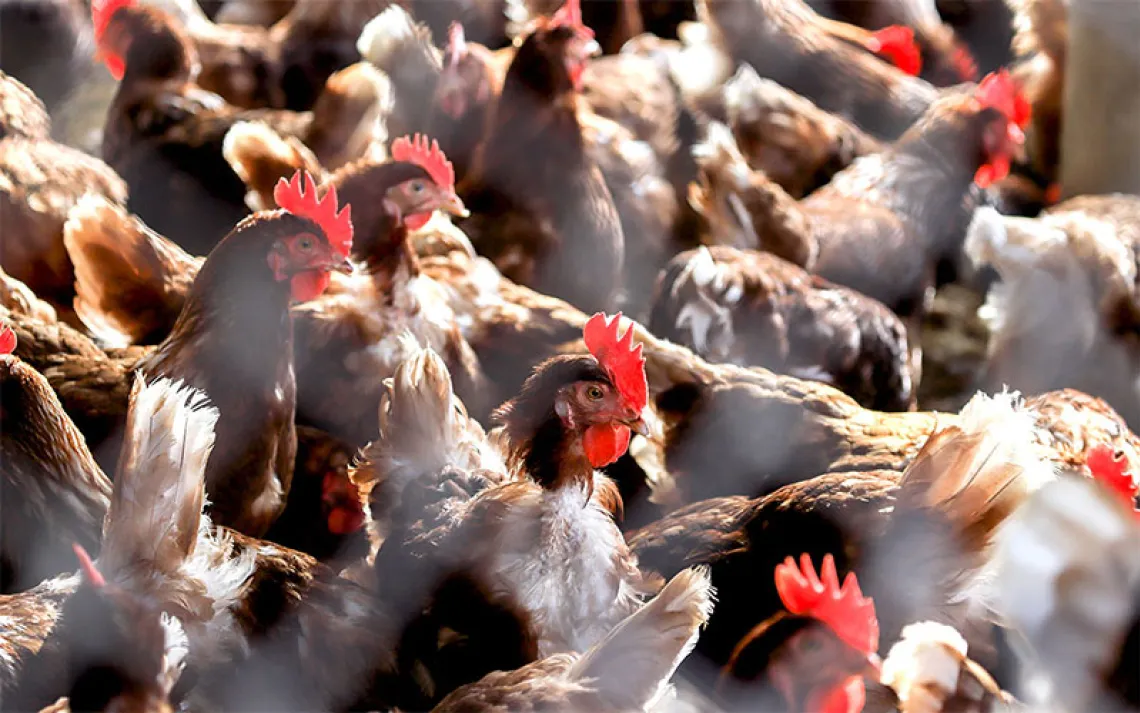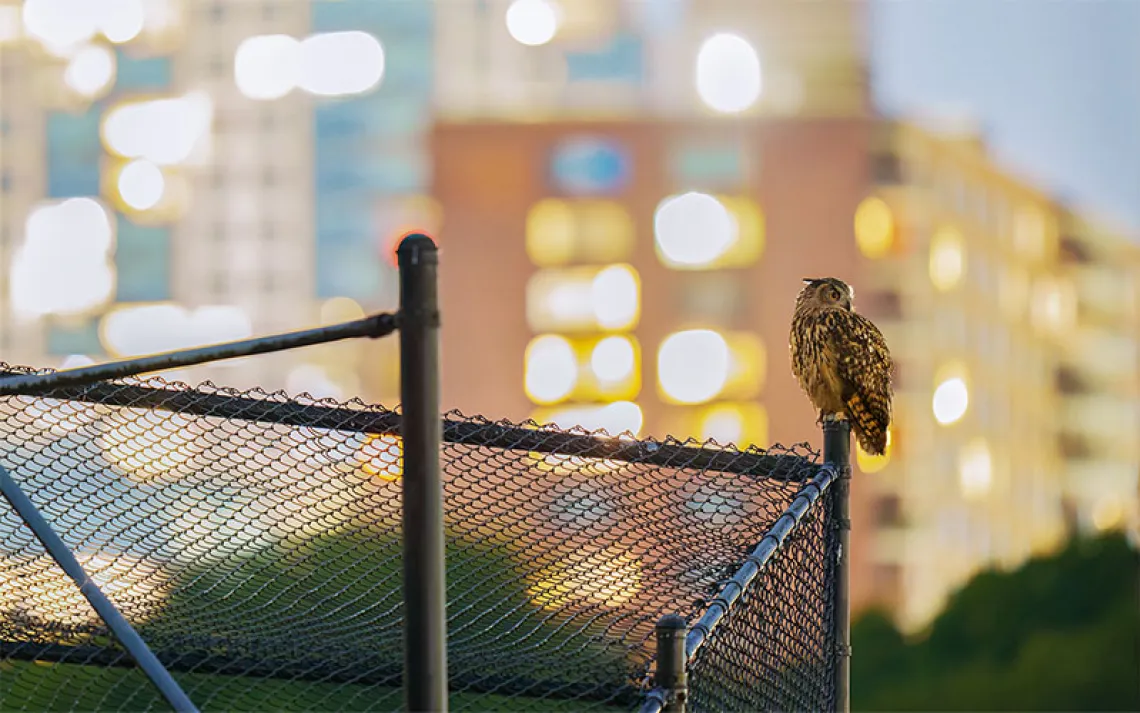Non-Native Parrots Have Naturalized Across the United States
Is that good news, bad news, or neither?
Residents of San Francisco, Chicago, Miami, and other cities have been tracking flocks of non-native parrots in their midst since at least the 1970s. The tropical birds, usually escapees from the pet trade, variously incite excitement, wonder, and irritation among a human populace that generally regards them as either welcome additions to a neighborhood (to wit, the 2003 documentary Wild Parrots of Telegraph Hill) or as noisy pests prone to causing fires and power outages when they nest on power lines and transfer stations.
These same love-'em-or-hate-'em urbanites have been helping researchers get a bead on just how many parrots and parrot species US cities are hosting and whether the birds have naturalized—that is, bred to create self-sustaining populations. Their citizen-science data, logged via Cornell Lab of Ornithology’s eBird and the National Audubon Society’s Christmas Bird Count, has been “groundbreaking and so valuable,” says ornithologist Jennifer Uehling.
A doctoral student at Cornell University, Uehling was lead author on an April paper published in the Journal of Ornithology. “[Citizen science] makes this kind of research possible, because there’s otherwise no way we could go out and observe parrot species in all the places they’ve gathered over the decades across the contiguous US.”
Thanks to this data, Uehling and her coauthors discovered that between 2002 and 2016, 56 species of parrots were sighted in 43 states. Of those, 25 species had naturalized in 23 states—including Arizona, Louisiana, and North Carolina—as well as colder locales like Connecticut, Illinois, and New York. California, Texas, and Florida support all 25 of those naturalized species, of which monk parakeets (Myiopsitta monachus), red-crowned Amazons (Amazona viridigenalis), and nanday parakeets (Aratinga nenday) are the most abundant. There are also rarer parrots in the mix, like the lilac-crowned Amazon, which is endangered in its native Mexico; South America’s turquoise-fronted Amazon, which is declining in its home countries; and, says Uehling, hybrid parrots, which result from crossbreeding in the wild.
By far the most successful of avian escapees are monk parakeets (42,981 sightings logged over 15 years). Native to Argentina, Bolivia, and Brazil, the 11-inch green- and gray-feathered vertebrates were imported into the US between 1960 and 1980 “by the thousands,” according to Audubon, and legends abound as to the escapades that led to their break-outs from captivity. They’re the only parrot-family members to live in colonies, building stick nests—sometimes massive ones—in trees and in manmade structures. In Chicago’s Hyde Park neighborhood, where Uehling first saw and became enamored of them as a prospective undergrad at the University of Chicago, they favor utility poles. At the Green-Wood Cemetery in Brooklyn (pictured below), they’ve coopted the crags and crannies in the brownstone spires of the Gothic Revival front gates.

Photo courtesy of Ada Cowan
Unlike other species, which are cavity nesters, “monk parakeets don’t have to worry about finding a decent hole,” says Uehling. The warmth generated by their colonial living, coupled with what Uehling calls the monks’ “wild” seasonal shifts in diet—fruit, flowers, and grain in the summer and birdseed pilfered from backyard feeders in cold months—at least partly accounts for their adaptability to northern winters.
But aside from the economic ramifications of their nests occasionally catching fire, the question of whether the monks and other parrots engender positive or negative consequences for native species and habitats remains an unanswered question—one Uehling hopes other researchers will now delve into.
University of Chicago ornithologist Stephen Pruett-Jones, Uehling’s undergraduate adviser as well as her coauthor on the paper, has been studying non-native parrots since 1989. He points out that thinking of these parrots as invasive species presents something of a semantic and ethical tangle, considering they proliferate in habitats filled with human-planted non-natives. “We don’t have any naturalized parrots living truly in the wild outside some association with humans,” he says. “Their foraging is done in parklands or suburban habitats where we’ve planted ornamental fruit and flowering trees. We’ve modified our habitat to suit ourselves, and that’s been absolutely perfect for the parrots.”
The argument for or against non-native parrots can’t be considered globally. Rather, it has to be taken on a case-by-case basis, according to both Uehling and Pruett-Jones: Is a particular flock of birds causing damage or making a nuisance of itself? No studies have actually proven that the birds are creating negative effects on native species. Then again, says Pruett-Jones, that’s partly because such studies are logistically challenging to orchestrate.
Anecdotal evidence is pretty strong against some populations of monk parakeets, though—those power-line fires, for starters. And Pruett-Jones cites another example from his own observations of the Hyde Park flocks: “Every fall when the holly trees would put their berries out, the monk parakeets would decimate every berry [right when] waxwings and robins [were] migrating through Chicago,” he says. “I can’t back this up, because it’s hard to get quantitative numbers on transient [birds], but it’s entirely possible and likely that naturalized parrots were reducing food sources” for those migrants. He notes similarities to non-UK-native ring-necked parakeets—which roost in backyards, in flocks of up to 3,000 birds, squawking and pooping with abandon. English authorities considered (but then ruled out) the extreme position of culling them. And in Australia, non-native parrots could eventually compete for resources with the country’s few dozen native parrot species.
Most of the US’s immigrant parrots probably fall somewhere in the neutral space—neither good nor bad for the ecosystems they’ve claimed. And some of them may come to take on greater, positive significance, as native populations decline elsewhere. “Climate change changes the ecology in complex ways,” says Uehling. But ultimately, says Pruett-Jones, how these non-native avians are perceived by the humans among them will depend “on your perspective and what you value.”
 The Magazine of The Sierra Club
The Magazine of The Sierra Club




